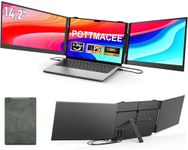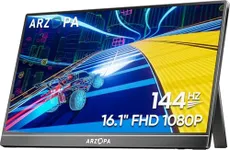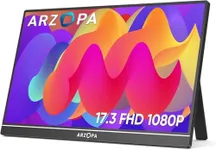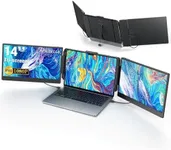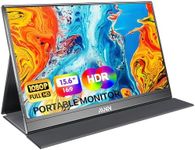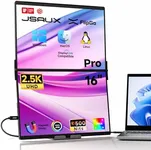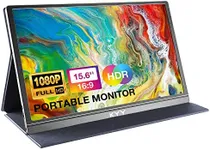Buying Guide for the Best Portable Monitor
Choosing the right portable monitor can significantly enhance your productivity, entertainment, and overall experience when using your devices on the go. Portable monitors are designed to be lightweight and easy to carry, making them perfect for travel, remote work, or simply expanding your screen space. To make an informed decision, it's important to understand the key specifications and how they align with your needs.Screen SizeScreen size refers to the diagonal measurement of the monitor's display area, usually expressed in inches. This spec is important because it determines how much screen real estate you have to work with. Portable monitors typically range from 10 to 17 inches. Smaller screens (10-12 inches) are more compact and easier to carry, making them ideal for frequent travelers. Medium-sized screens (13-15 inches) offer a balance between portability and usability, suitable for general use. Larger screens (16-17 inches) provide more space for multitasking and detailed work but may be less convenient to transport. Consider your primary use case to choose the right size for you.
ResolutionResolution indicates the number of pixels displayed on the screen, affecting the clarity and detail of the image. Common resolutions for portable monitors include HD (1280x720), Full HD (1920x1080), and 4K (3840x2160). Higher resolutions provide sharper and more detailed images. HD is sufficient for basic tasks and casual use. Full HD is ideal for most users, offering a good balance of quality and performance for work, gaming, and media consumption. 4K resolution is best for professionals who need high precision for tasks like graphic design or video editing. Choose a resolution based on the type of content you will be viewing and your need for image clarity.
ConnectivityConnectivity options determine how you can connect the portable monitor to your devices. Common ports include HDMI, USB-C, and DisplayPort. HDMI is widely used and compatible with most laptops, gaming consoles, and media players. USB-C is versatile, allowing for power delivery and data transfer through a single cable, making it ideal for modern laptops and smartphones. DisplayPort offers high performance for gaming and professional use. Some monitors also support wireless connections like Wi-Fi or Bluetooth. Consider the devices you plan to connect and ensure the monitor has compatible ports for seamless integration.
WeightWeight is a crucial factor for portability. Portable monitors are designed to be lightweight, but the weight can vary significantly. Monitors typically range from 1 to 3 pounds. Lighter monitors (1-2 pounds) are easier to carry and handle, making them perfect for frequent travelers and those who need to move around often. Heavier monitors (2-3 pounds) may offer more features or sturdier build quality but can be less convenient to transport. Consider how often you will be carrying the monitor and choose a weight that suits your lifestyle.
Battery LifeBattery life determines how long the monitor can operate without being plugged into a power source. This is important for users who need to work or watch content on the go. Portable monitors can have built-in batteries or rely on external power sources. Monitors with built-in batteries typically offer 4 to 8 hours of usage. Longer battery life is beneficial for extended use without access to power outlets. If you plan to use the monitor for long periods away from home or office, opt for a model with a longer battery life. Otherwise, if you will mostly use it near power sources, battery life may be less critical.
TouchscreenTouchscreen capability allows you to interact with the monitor using touch gestures, similar to a tablet or smartphone. This feature is important for users who prefer intuitive and direct control over their devices. Touchscreen monitors can enhance productivity, especially for tasks like drawing, note-taking, and navigation. If you need a monitor for creative work or presentations, a touchscreen can be very useful. However, if you primarily use a keyboard and mouse, this feature may not be necessary. Consider whether touch interaction will benefit your workflow and choose accordingly.
